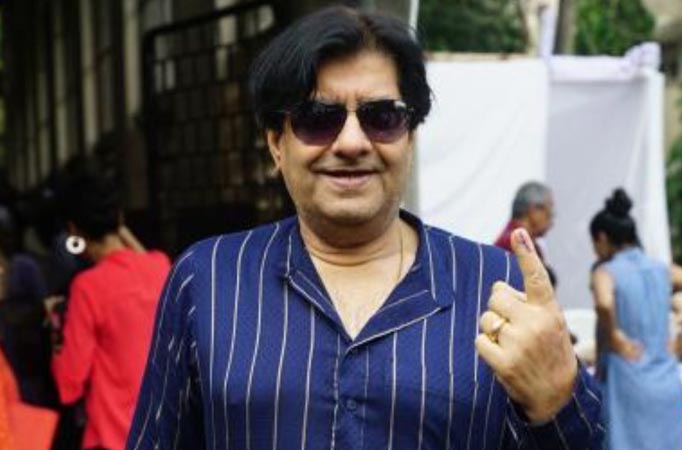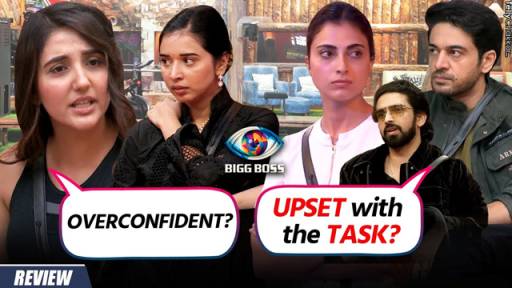
MUMBAI: It was believed that becoming a hero was all about good looks, a kind of personality and charm the one watching the film identified with, saw himself or her man in the hero!
Though a lot of actors came through the Film and Television Institute of India (FTII) in Pune, it did not mean they landed a film the day they walked into Mumbai studios. They had their share of struggle, too. Not many established makers would take the risk of casting them. Even if they cast these FTII alumnus, it would be in bit roles.
These FTII grads had big dreams but no big breaks. But there were some new filmmakers who had no access to big stars. One such producer-director at that time was BR Ishara. He believed in making unconventional films and these FTII actors made it possible for him.
Thanks to Ishara, some of these actors from FTII got exposure. At least, they no more needed to make the rounds of production offices with their portfolios. Anil Dhawan, Vijay Arora, Shatrughan Sinha, Danny, Rehana Sultan were cast in films by Ishara. Because of the kind of films Ishara made, these stars were noticed instantly, whatever the fate of the films.
Ishara introduced titillation on Hindi screen with "Zaroorat". Considering the censor board norms in those days, it was a Hara-kiri. The film was stuck with the censors and Ishara's next film, "Chetna" released first.
Anil Dhawan got the best break with "Chetna"(1970). This time, Ishara avoided titillation on screen but the publicity material of the film did all the titillation needed to promote the film. The alphabet A was prominently displayed extending from top to bottom on all the publicity material denoting A for Adult audience! Add to that, the film had appealing musical score.
Ishara made his next "Milap"(1972) with Shatrughan Sinha on a supernatural theme. The film, again, had great music though it had only two songs. While Anil Dhawan, with a face cut out to be a filmstar, got instant recognition, Sinha had to continue his struggle getting some bit roles at best, which he had been doing since Dev Anand's "Prem Pujari" (1969).
Sinha had to be content playing negative roles. His work was noticed in "Mere Apne", "Khilona", "Bombay To Goa" and, mainly, in "Raampur Ka Lakshman" where he got equal footage as villain opposite Randhir Kapoor. Being a Manmohan Desai film with a hit musical score, the film opened to full houses. Sinha was probably overwhelmed by this public response and was seen standing outside Mumbai's Shalimar Cinema where the film had opened and boasting: "Kyon, kar di na Dabboo (Randhir Kapoor) ki chhutti…!" Well, villains don't usually do 'chhutti' of heroes since the hero always got his own at the end in an authorbacked script.
Sinha would have preferred playing positive roles and those came to him mainly in films with two or more heroes. Finally, he got his solo hero film with "Kalicharan" (1976), his first major hit.
Though Anil Kapoor made his first screen appearance in 1979 in a small role in Umesh Mehra's "Hamare Tumhare", and also did a few insignificant films, he got his real break only with "Woh 7 Din" (1983), produced by his brother Boney Kapoor and directed by Bapu, which did well and set him up as a hero. In fact, one can say that Boney Kapoor shared Anil's struggle not only making films for him but also making sure that the outside makers whose films Anil signed were reputed and had a standing in the industry. That helped Anil, who went on to do films for some big makers like Yash Chopra, Prakash Mehra, Nari Sippy, NC Sippy, Rajiv Rai, Feroz Khan, Rakesh Roshan, D. Rama Naidu, K Vishwanath along with other major South producers.
Sunny Deol was luckier. When he was launched with a home production, "Betaab", a love story with another debutante, Amrita Singh, in 1983, his father, Dharmendra, was still active doing a number of films. Dharmendra was one of the most popular actors for the producers to work with and also enjoyed a great deal of goodwill and fan following among moviegoers.
Sunny was slated to become an action star, but a safe script to launch a new hero those days was a love story. "Betaab" was a clichéd, old-fashioned love story. Childhood buddies in Sunny and Amrita Singh, Nirupa Roy, the eternal Hindi film mother figure, and, to round it up, a rich girl versus poor boy equation bothering the young lovers! Nothing could be more clichéd than that!
I think, more than the film, it was Dharmendra's goodwill and Sunny being his son, saw the film through and emerge as a hit. Sunny had some more hits in "Sohni Mahiwal", "Chaalbaaz" and "Tridev" but, he came into his own only with "Ghayal" (1990).
A contemporary of these two, Anil and Sunny, was Jackie Shroff. He struggled a lot but never made it seem like one. He took things in his stride as they came his way. He was gifted with a great personality and a pleasant demeanour. His lack of resources never showed on him. He continued to seek odd jobs despite his education background being limited to high school.
The first time I met him, he was shooting a Mafatlal Fabric ad for Sudesh Iyer at the top floor of the Taj Hotel in Mumbai. He was never shy of coming forward and introducing himself. He just wanted to be in films, no matter that Dev Anand offered him a role in "Swami Dada", but replaced him with Mithun Chakraborty the next day, reducing him to one in the crowd.
Next time I met Jackie was as a media invitee at the shooting of "Hero" in Ooty. Subhash Ghai had decided to launch him. When released, "Hero" was a slow starter but eventually went on to become a hit. The film was well blessed with a musical score to last by Laxmikant Pyarelal.
Jackie created a lot of goodwill and bonhomie in the film industry and, like Dharmendra and Sunny, his son, Tiger Shroff, enjoyed its fruits on his launch.
Among all these, the most interesting and intriguing struggle story is that of Mithun Chakraborty. Not only his struggle story but his whole life story actually. It is something a film script can be written about. In that, though well-educated considering the times, there were stories about him being a Naxal, believing in violence and having run away from Kolkata to avoid imminent arrest. Being a Naxalite was the done thing for a Bengali youth in those days, it would seem.
Mithun also happens to be an FTII graduate. There were a lot of FTII graduates going around in those days. And, the filmmakers did not think that a person could be taught to become an actor. All the reigning actors, so far, had been raw when they came to films. No training, just passion. The best people like Rajesh Khanna or Anil Kapoor could claim doing stage in college. To his credit, Mithun had done some modelling assignments under the assumed name of Rana Rays.
Mithun ended up doing bit roles in films like "Do Anjaane" (Amitabh Bachchan-Rekha/1976). By 1977, Mithun had won one of his three National Awards for Best Actor for Mrinal Sen's bilingual "Mrigayaa" (Bengali-Hindi). But, like FTII graduates, even the National Award was not considered to be a plus in those days, not for regular commercial filmmakers. The struggle continued. When Mithun bagged a role in "Do Anjaane", it was the first time a regular Hindi filmmaker had offered him work. But, this was because of the film's director was Dulal Guha, whose sons, Gautam and Putul, had become friends with Mithun and had been supporting him.
"Do Anjaane" was no help because Mithun had a blink and miss kind of exposure in the film. He would jokingly call it his outstanding film because, he would say he was out of the frame most of the time. But, by now, the South makers had noticed Mithun and he was signed for "Mera Rakshak" (1978).
But, stardom came for Mithun from the man who launched Jeetendra into stardom, Ravikant Nagaich. Nagaich, an ace cinematographer-cum-director, had this fancy for making James Bond kind of spy thrillers like "Farz", which had made with Jeetendra. Mithun was Gunmaster G-9 in "Surakksha". The film went on to become a major hit, followed by a G-9 sequel, "Wardat".
The film that followed, Rajshri's "Taraana", proved that Mithun was not all action and could be good enough in a romantic musical. The film proved to be a jubilee hit. Mithun was the only star to create a fan following in Russia and the only Hindi star whose film, "Disco Dancer", was watched by people in the hinterlands of Southern states. The other film being "Sholay"!
Mithun was ever smiling and took jokes about him sportingly. He was dubbed Poor Man's Amitabh Bachchan while Raj Kapoor called him a purple hero because the way make-up looked on his relatively dark skin!
By now, a homeless Mithun could also afford to buy a house and he bought one in Bandra with an in-house terrace. He was a dog lover and the terrace is where he kept about half a dozen of his ferocious looking dogs, especially when he had a visitor. (Later on, he went on to build a bungalow for his family at Madh Island.)
For whatever reason, Mithun shifted his base to Ooty, where he built two big hotels. The producers followed him there, making films with him as well as giving business to his hotel. For the undisciplined Hindi filmmakers, this worked to their advantage as they could come back with a finished a film within a few weeks.
The film industry believed in celebrating every event, from launching of a film to 100-Day run and jubilees, with cocktail dinner parties. Mithun knew to get work, he must be seen and he would go party-hopping. And, not having much cash on hand, would ask to share a cab with journalists; 80 paise ride divided four ways!
Almost all actors struggled to make it but Jackie Shroff and Mithun Chakraborty had come out of the blue. No connection to films from any angle. In the era of biopics, these are two readymade subjects to make films on. Especially, Mithun Chakraborty for the various sub plots in his life: A graduate, a Naxalite who turned to a most unlikely field of film acting and won National Awards. Then going onto become a superstar of Hindi films, his marriages, sudden decision to leave Bombay, becoming a hotelier to adopting a girl child, and then going on to become a Rajya Sabha member of TMC party despite his initial leanings to the Communist party! Besides all this, he also cared for the film workers and organised measures for their welfare.

















Add new comment